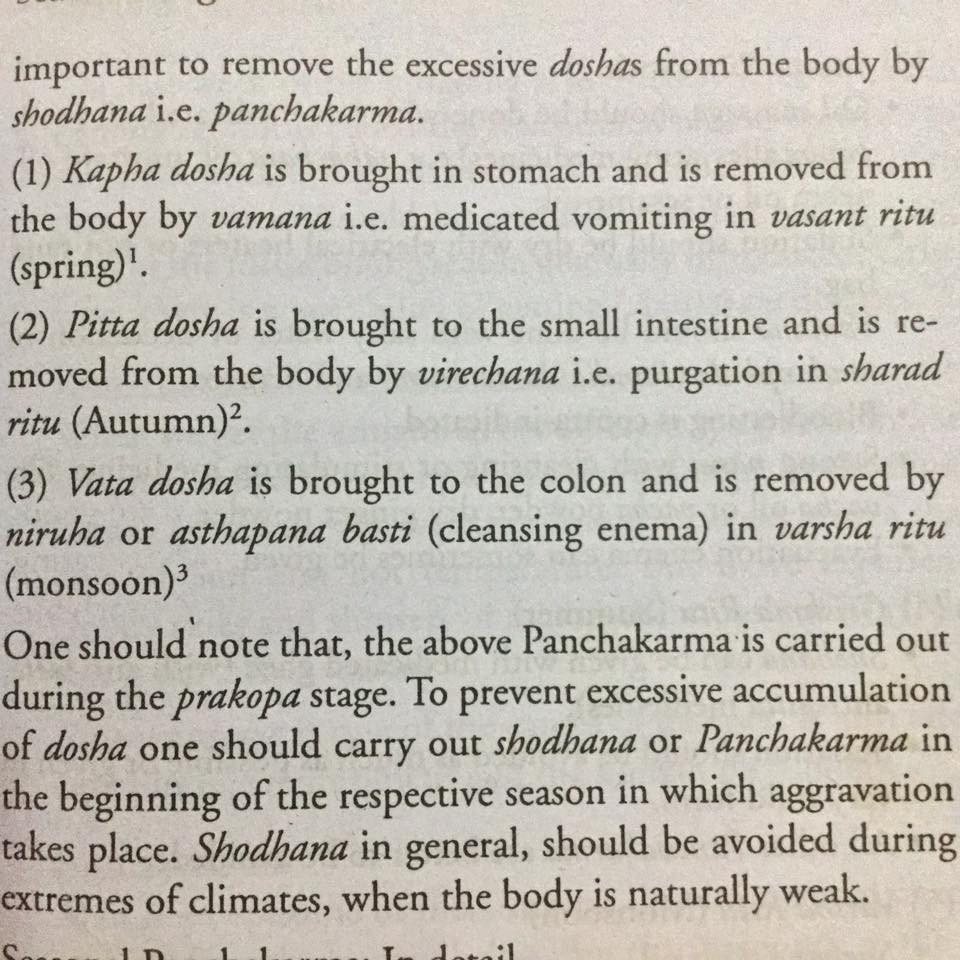Shat: six + Karma: Action/Process (in this case, purificatory in nature)
The shatkarmas of yogic science are physio-psychological cleansing processes. The aim of hatha yoga is to create harmony of the ida(moon channel)/left nostril/ sympathetic system with the Pingala(sun channel)/right nostril/parasympathetic system so as to channelize the flow of energy through the sushumna/Central channel and arrive at physiologicalhomeostasis and transcendental nirvana.
Hatha Yoga Pradipika 2:23 states that the shatkarmas are secret practices that are highly valued by yogis to aid the practice of asana and pranayama by cleansing the subtle channels/nadis to create an unobstructed flow of energy. Varied yogic texts can go into elaborate numbers of shatkarmas, but for easier understanding, they are largely grouped under six categories.
1) Neti: Nasal cleansing-Jala(water) and Sutra(greased string/rubber catheter)
2) Dhauti: Digestive tract cleansing
3) Nauli: Abdominal massage: the visceral organs
4) Basti: Colon Cleansing
5) Kapalbhati: Purification and vitalization of the frontal lobes of the brain
6) Trataka: Gazing without blinking: cleansing the higher brain centers
As purificatory practices, the shatkarmas result in vibrant physical health and mental clarity to create harmony in everyday living. They especially work on the digestive, circulatory, nervous and respiratory systems of the body. They are used as preventive and curative processes to cleanse the body and energy channels to allow free flow of pranic life force through the purified nadis.
During shatkarmic cleansing, the mind is engaged to overcome the involuntary reflexes of the body. This creates the link to bring about control of the mind to culminate into pratyahara(withdrawal of the senses) of the internal yoga (antaranga sadhana): Thus being an important shift from the first four steps of the external (bahiranga sadhana) yoga of yama, niyama, asana, pranayama of the socio-physiological level towards the psychological inward levels of pratyahara, dharana, dhyana and finally samadhi that constitute the internal antaranga yoga.
Shatkarmas should be practiced as per individual need and as per season and moon cycles. They have adverse outcome if practiced wrongly and were thence kept as a secret yogic practice; hence, they should be learned from an accomplished teacher only after being fully prepared to undertake them. An expert yogi intuitively understands the need of the body-mind complex and applies wisdom to the use of shatkarmas for furthering the path of yoga.
Ayurveda offers panchkarma as a cleansing system- most of the panchkarma processes can be correspondent to the yogic shatkarmas-
Nasyam- Neti; Vaman- Dhauti; Virechan-Nauli ; Basti-Basti;
The fifth process being Raktamochana(blood letting)



